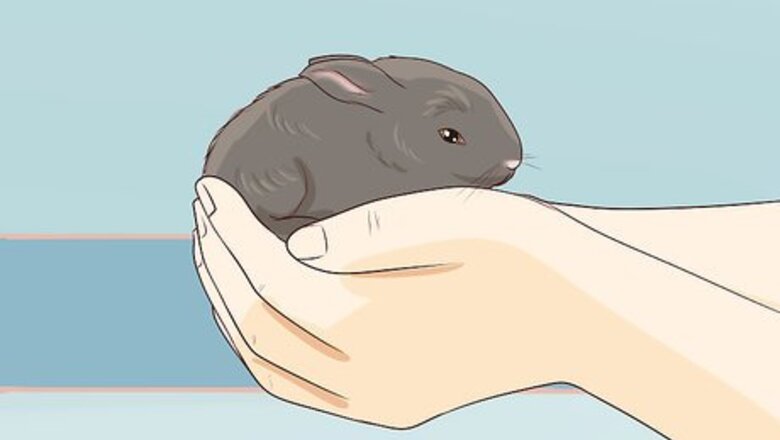
views
Picking Up the Rabbit
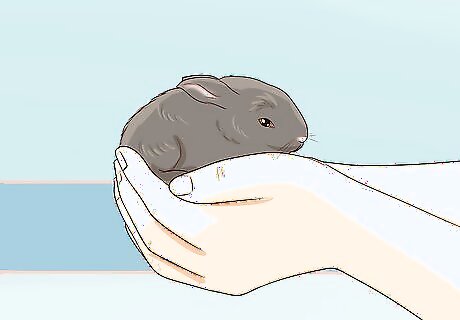
Start when it's young. It is best to get rabbits used to being handled early in their lives so that they will be accustomed to it later on. Rabbits who are not handled regularly can find human contact distressing. Make a point of picking up and carrying your rabbit a few times a week, and not just when it need to be transported (e.g. to the vet).
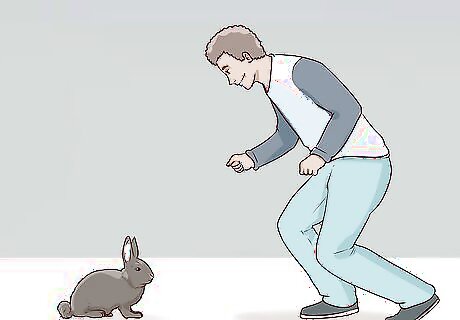
Move slowly and gently. Pet your rabbit gently, and wait for it to relax and calm down. Be sure to talk gently to your rabbit and make slow, gentle movements. If possible, only handle your rabbit in a quiet environment (e.g. a quiet, empty room at home). Rabbits have very fragile bones, so be especially cautious when handling them.
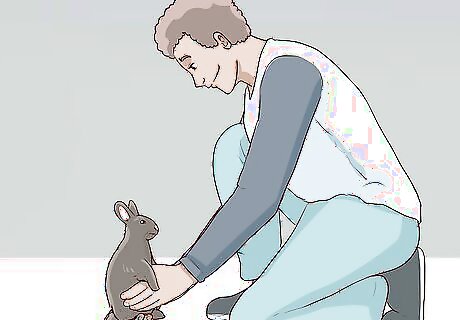
Pick up your rabbit close to the ground. As a general rule, rabbits are more comfortable being picked up from the ground than from a table. Whenever possible, interact with your rabbit at ground level. This also reduces the risk of your rabbit being dropped from a great height.
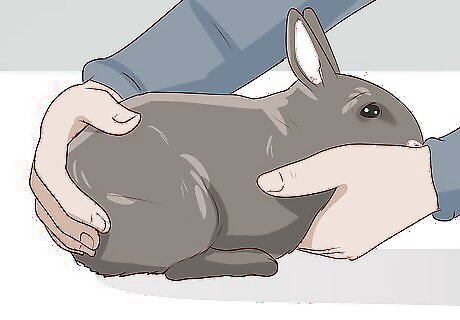
Position your hand under the rabbit. Place one hand under your rabbit’s chest. Position your fingers to be resting under its armpit (also known at the axilla). Make sure that the rabbit’s front limbs are over your hand, to prevent compression of its chest.
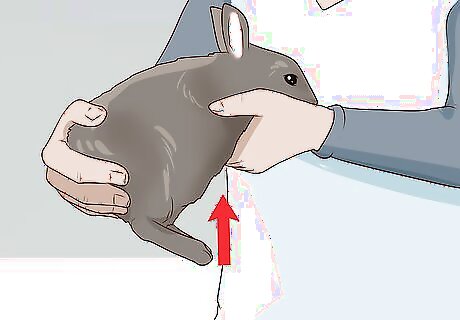
Lift the rabbit. Make sure that your hand is firmly braced around the rabbit. Slowly and gently lift it up. Hold the rabbit so that its limbs are facing away from you, to prevent kicking or scratching with sharp nails.
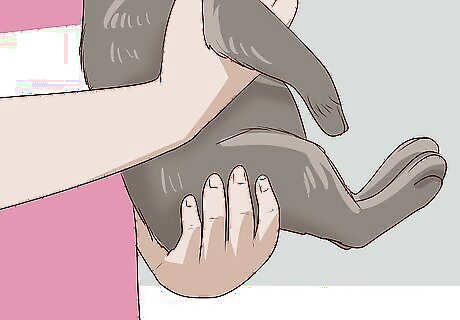
Support its weight. As you lift up the rabbit, bring your other hand under the animal to support its weight. Position your full hand, palm up, under its rump, letting the rabbit’s weight rest on it. Hold the rabbit firmly to prevent kicking, which could damage its spine. For extra support, lean your rabbit’s back on your chest. Alternatively, lean the side of your rabbit against your chest and support its rump with your elbow. Gauge your rabbit’s comfort level with different positions for future reference.
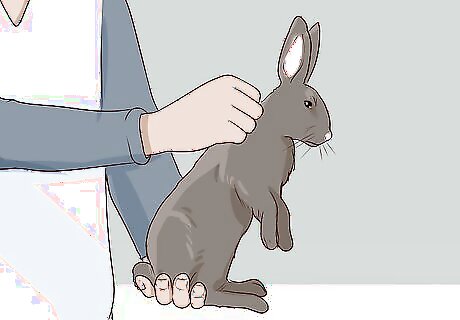
Handle an aggressive rabbit. If your rabbit is especially unnerved by being picked up and seems aggressive, alter your holding strategy. Hold it with its limbs facing away from you and lift it firmly by the scruff of its neck. Make sure to support its rump firmly, with its hind limbs braced securely. This method of carrying should only be used for short distances.
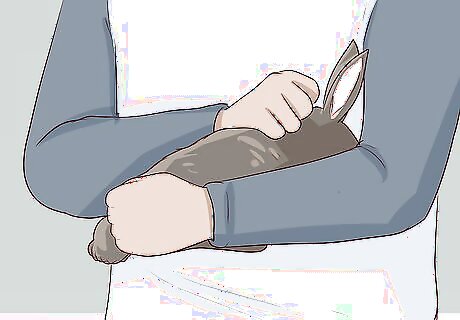
Cover its eyes. If your rabbit seems unnerved when being handled, try covering its eyes. Some rabbits feel more relaxed being carried when they do not see their surroundings. Use a towel or the crook of your arm to gently obstruct its view. Make sure that the rabbit’s nostrils (also called nares) are not blocked when you cover its eyes.
Transporting Your Rabbit
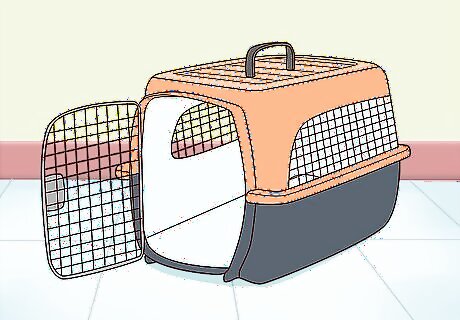
Choose the right carrier. Look for a carrying case made out of plastic, with ventilation holes to prevent overheating, and a firmly attached handle.. The plastic should be thick enough to be chew-proof, and the access and ventilation areas should be made of strong wire.Your carrier should be large enough for your rabbit to sit up straight and lay down comfortably inside, but small enough to make your rabbit feel secure, and prevent it from sliding or rolling around during transport. If your rabbit is large and you need a big carrier, consider choosing a model with wheels or a shoulder strap to move it more easily.
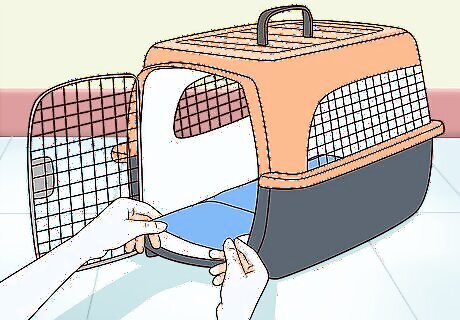
Line the carrier. A nervous rabbit is likely to urinate in its carrier, so line the inside surface with paper towels or hay before placing it inside. Hay might also serve as something for your uneasy rabbit to nibble on to calm its nerves. Place enough hay or paper towels inside to absorb urine so that it doesn’t gather on your pet’s coat.
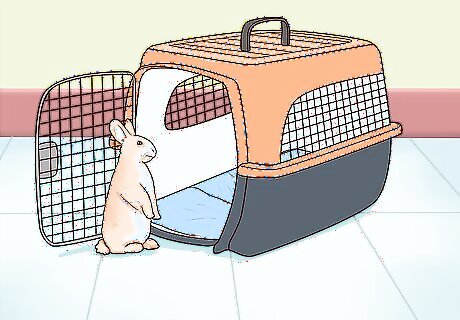
Get your rabbit comfortable with the carrier. Before you use the carrier, leave it out in the open inside your rabbit’s home enclosure for it to explore on its own. Getting familiar with the carrier will reduce your rabbit’s anxiety about it later on. Place it on the ground with the door open, and leave snacks inside. You can also put a small towel or blanket in your rabbit’s normal cage and then transfer that to the carrier when you’re ready to transport your rabbit. The familiar smells will help put your rabbit more at ease.
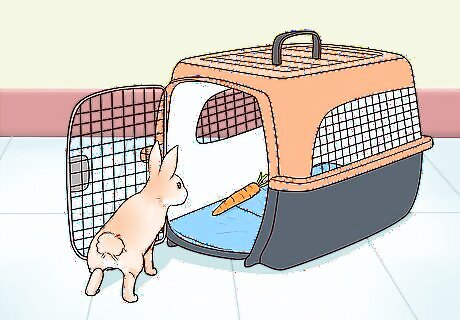
Place your rabbit into the carrier. Never push or force your rabbit into its carrier. Entice it to enter with snacks or toys, and gentle encouragement. Always give yourself enough time to be patient about the process before transporting your rabbit to an appointment. Once your rabbit is in the carrier, be as quiet and gentle as possible about locking the door behind them.
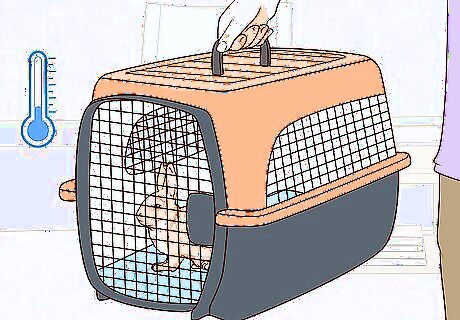
Prevent overheating. Do your best to keep your rabbit cool and comfortable during transport. Avoid traveling during the warmest point of the day. You can also try using small, portable fans made to attach to the outside of the carrier to provide a breeze and encourage airflow during the journey. Make sure that your rabbit has access to water during the trip.
Keeping Your Rabbit Healthy and Happy
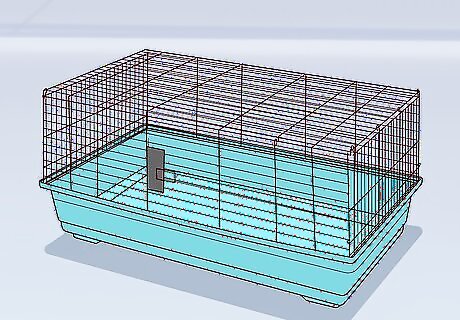
Create a good living space. Make sure that your rabbit has a wire cage or hutch at least 4 feet long, 2 feet wide, and 2 feet deep to live in. Make sure that the parts of your home where your rabbit might play when it's out of its cage are "bunny-proofed". Clear the area of any loose electrical wires it might chew, chemicals or cleaners it might ingest, or dangerous items it might harm itself on.
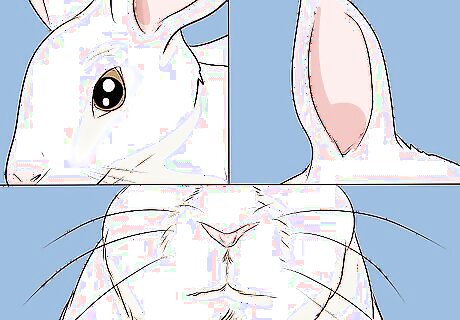
Monitor your rabbit's health. Observe your rabbit to ensure that it is healthy and content. Regularly check its eyes, nose and ears to make sure that they are clean, and its front teeth to make sure that they are in good condition. Look for matted fur (which can indicate drooling or tooth problems), and keep track of its eating habits to note irregularities and prevent overeating. If you notice any health issues, bring your rabbit to the vet for an exam as soon as possible.

Groom your rabbit. Keep your rabbit healthy and happy by grooming it regularly. Keep your rabbit's fur clean and untangled by brushing every 2-3 days and spot cleaning when needed, and trim its nails every 4-6 weeks. If your rabbit has long fur, keep it trimmed to an inch to prevent mats and knots.




















Comments
0 comment